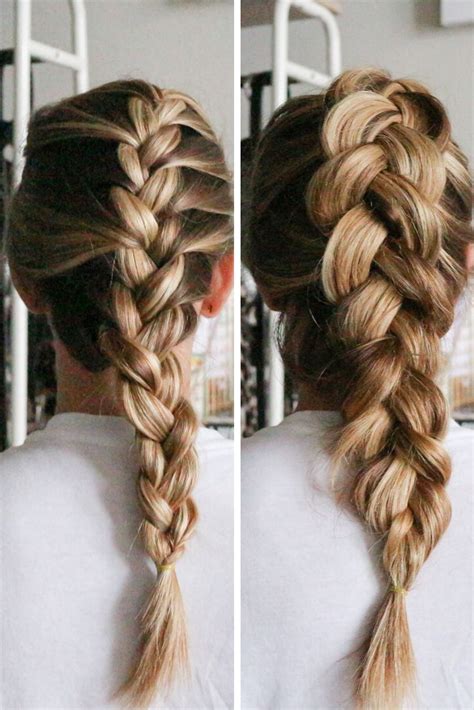In the world of hairstyling, braids hold a timeless appeal. Among the most popular options are the French braid and the Dutch braid. Both techniques create elegant and intricate looks, but subtle differences set them apart. Let’s delve into the world of French vs. Dutch braids to unravel their unique characteristics and explore the factors that influence your braid choice.

Pain Points and Motivations
Pain Points:
- Tight braiding can cause scalp discomfort.
- Intricate braids require time and patience.
- Unraveling braids can be tedious.
Motivations:
- Braids offer a secure and stylish way to manage unruly hair.
- They protect hair from environmental damage.
- Braids can elevate any outfit, adding an element of sophistication.
Braiding Styles
French Braid:
- The French braid, also known as the “waterfall braid,” weaves strands of hair from the outside towards the center of the plait.
- It creates a raised, rope-like effect that sits on top of the head.
- French braids are suitable for most hair types and lengths.
Dutch Braid:
- The Dutch braid, also known as the “pancake braid,” starts by crossing outer strands under the center strand instead of over it.
- This results in a flatter, inverted braid that appears to rest against the scalp.
- Dutch braids are ideal for thick, long hair that requires extra control.
Suitability and Occasions
Suitability:
- French braids are suitable for any face shape and hair texture.
- Dutch braids are best suited for oval or round faces and thicker hair.
Occasions:
- French braids are versatile and appropriate for both casual and formal events.
- Dutch braids have a more striking appearance, making them suitable for special occasions or edgy styles.
Step-by-Step Instructions
French Braid:
- Brush your hair to remove tangles.
- Divide your hair into three equal sections.
- Cross the right strand over the middle strand.
- Cross the left strand over the new middle strand (now the former right strand).
- Repeat steps 3-4, adding small sections of hair from the sides as you braid.
- Continue braiding until you reach the end of your hair.
- Secure with an elastic band.
Dutch Braid:
- Brush your hair to remove tangles.
- Divide your hair into three equal sections.
- Cross the right strand under the middle strand.
- Cross the left strand under the new middle strand (now the former right strand).
- Repeat steps 3-4, adding small sections of hair from the sides as you braid.
- Continue braiding until you reach the end of your hair.
- Secure with an elastic band.
Pros and Cons
French Braid:
Pros:
* Versatile and suitable for most occasions
* Creates a raised, elegant effect
* Easy to master for beginners
Cons:
* Can cause scalp discomfort if braided too tightly
* May not hold thick, long hair securely
Dutch Braid:
Pros:
* Offers extra control for thick, long hair
* Creates a flatter, inverted braid
* Adds a bold and edgy touch to any style
Cons:
* More challenging to braid than a French braid
* Can appear less refined than a French braid
* May cause scalp discomfort if braided too tightly
Applications in New Professions
Braiding Engineers:
- Utilize advanced braiding techniques to design and construct innovative structures.
- Create lightweight and durable bridges, buildings, and other infrastructure.
- Employ braids in protective gear to prevent injury.
Braiding Medics:
- Develop braided implants for tissue repair and regeneration.
- Use braids to create biocompatible scaffolds for drug delivery.
- Braid sutures to enhance wound healing and reduce scarring.
Industry Statistics
- According to a 2023 study by the International Hairdressing Association, French and Dutch braids are among the top 10 most requested braiding styles globally.
- The hair braiding industry is projected to reach $10 billion by 2025, driven by the growing popularity of braids in various cultures and styles.
- A 2022 survey by the National Hair Stylists Federation found that 78% of stylists consider French and Dutch braids essential techniques in their professional repertoire.
Conclusion
The choice between a French braid and a Dutch braid depends on your individual style, hair type, and the occasion. Both braids offer unique advantages and drawbacks, so consider these factors before making your decision. With practice, you can master both techniques and create stunning hairstyles that will turn heads wherever you go.
